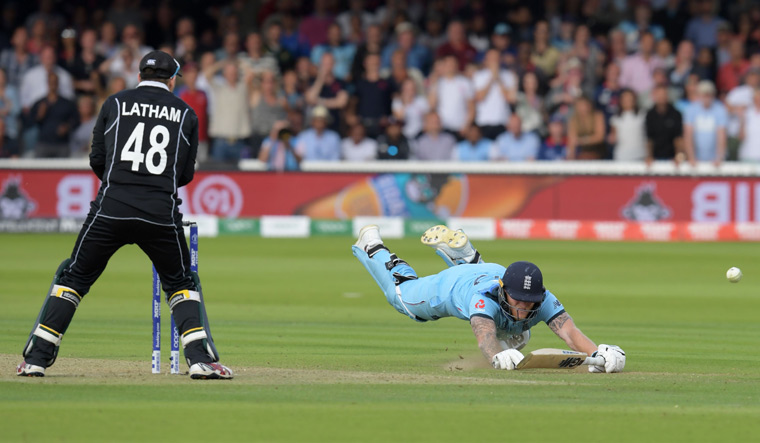2019
It was one of those days where every ball found the middle—mostly—of Ben Stokes’s bat, even if it was a throw from the boundary. Martin Guptill shot the ball in from long on, only for it to deflect off the bat to the boundary. Tom Latham could only grasp at air.
Umpire Kumar Dharmasena signalled six runs (two they had run and four for the boundary) and England found themselves within touching distance of their maiden World Cup. More drama ensued, but this moment captured the chaos best. England won the World Cup, beating New Zealand by zero runs. A boundary count decided the winner.
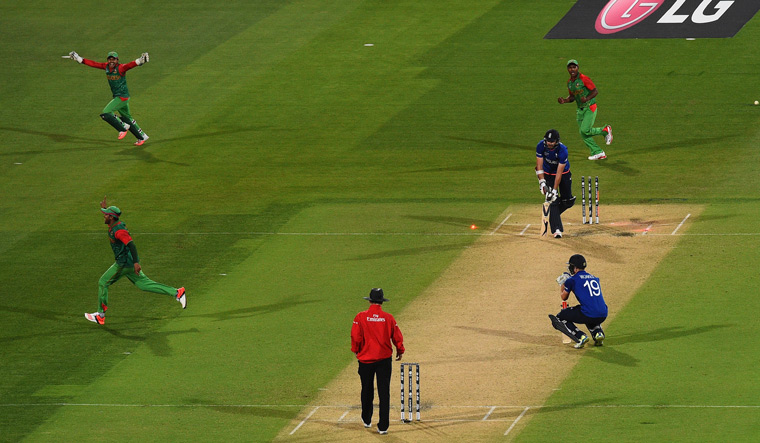 Getty Images
Getty Images
2015
As Rubel Hossain ran in to bowl at James Anderson at the Adelaide Oval, he had history in his sights. A win would take Bangladesh to their first-ever quarterfinal in the World Cup. All they had to do was beat England—a team in free fall—which they did by 15 runs. It was an iconic win, no doubt, but the bigger story in hindsight was the start of an English turnaround. The team traded in its cautious approach for a more free-spirited one, eventually winning the next World Cup at home.
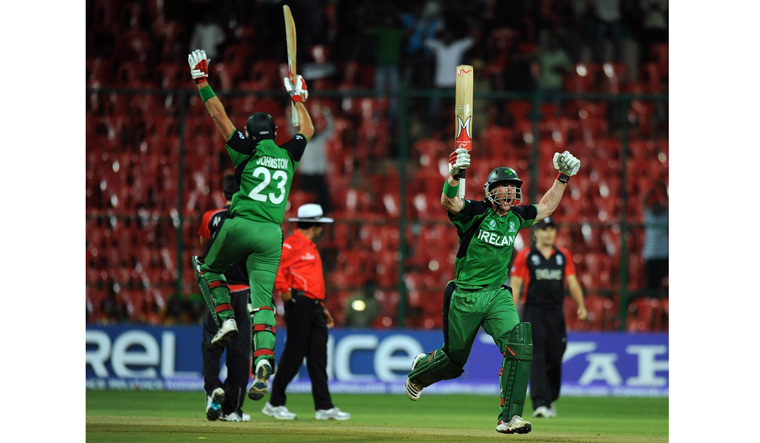 AFP
AFP
2011
Once again, England found themselves on the wrong side of the result against a less fancied opponent, this time falling to their neighbours Ireland in an upset for the ages. Chasing a target of 328, the Irish were 111-5 in 24.2 overs. Then came a hurricane called Kevin O’Brien, who smoked 113 off 63 balls to send the English packing in Bengaluru. John Mooney, who took four wickets, finished the match with the bat, striking a James Anderson delivery wide of midwicket for four. This was, at the time, the highest chase in World Cups.
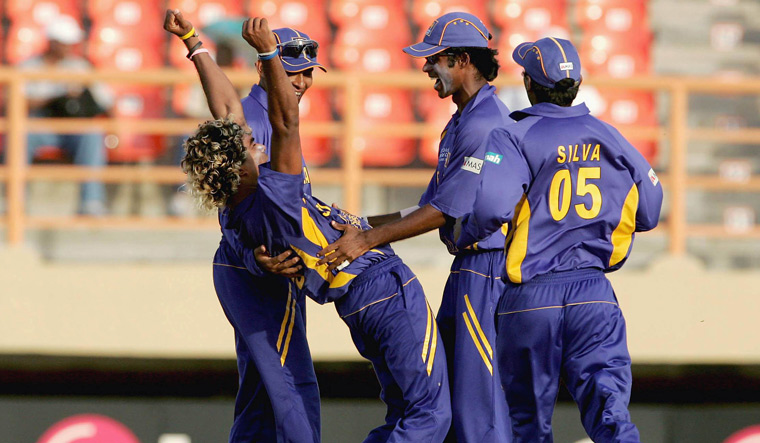 Getty Images
Getty Images
2007
Shaun Pollock, Andrew Hall, Jacques Kallis and Makhaya Ntini. The four men that fell to Lasith Malinga in four balls. It was one better than a hat-trick, and as unconventional as his hairstyle. South Africa were 206-5 chasing 209. Then, Malinga got Pollock and Hall off the last two balls of the over. Chaminda Vaas, from the other end, bowled a maiden. Malinga came back and cleaned up Kallis and Ntini. 207-9. The match ended when Robin Peterson edged a ball to the third-man boundary to win the thrilling encounter.
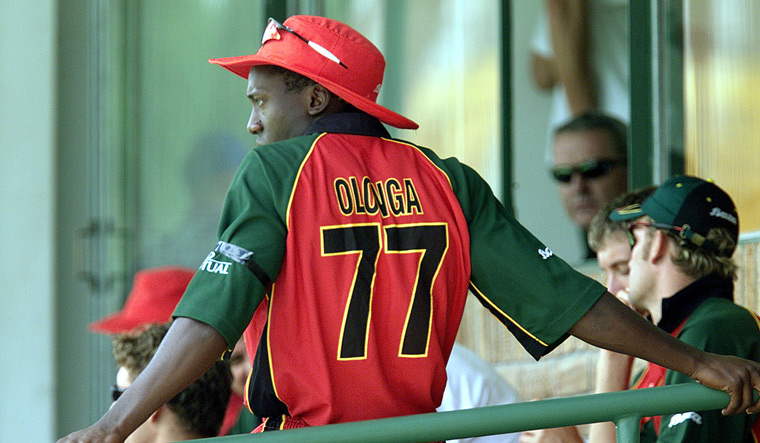 Reuters
Reuters
2003
“In doing so, we are mourning the death of democracy in our beloved Zimbabwe.” These were the words of Henry Olonga and Andy Flower, who sported black armbands in every match of the World Cup to protest the regime of President Robert Mugabe. Both players had to go into immediate and permanent exile in England. While Flower went on to be a reputed coach—his latest assigment is with Royal Challengers Bangalore—Olonga decided to pursue a career in music, and most famously appeared as a contestant on The Voice Australia.
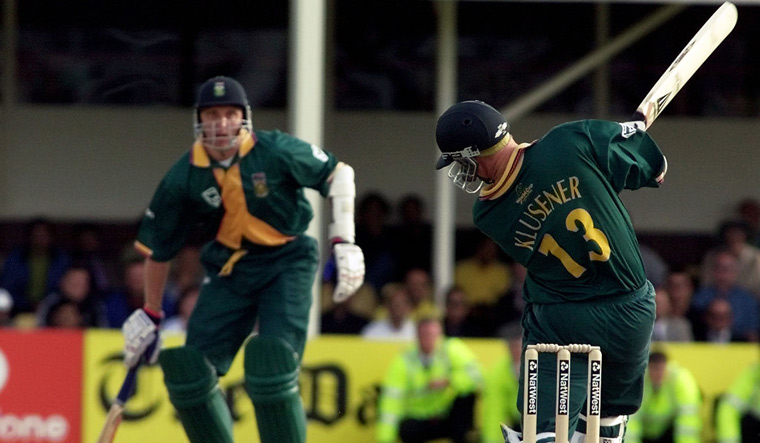 REUTERS
REUTERS
1999
Yes, Allan Donald did not run; yes, South Africa lost the semi-final; and yes, they became the “chokers” of world cricket. Not to be forgotten, though, is the fact that this was Lance Klusener’s World Cup. Not only was he Man of the Series, scoring 281 runs and taking 17 wickets, he also presented a prototype of what an ODI all-rounder could be.
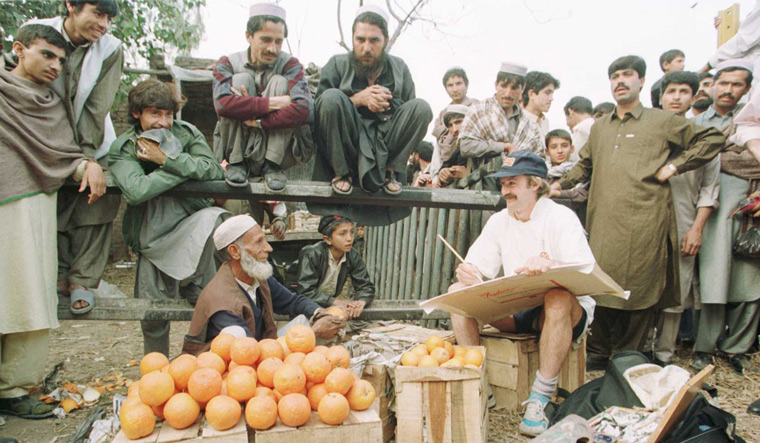 Getty Images
Getty Images
1996
Battles on the field might be fierce, but the World Cup, as a global event, also acts as a medium for cultural exchange outside the sport. Here, English keeper Jack Russell paints in the Peshawar bazaar on Eid. His team had a rest day and the man swapped his mitts for a paintbrush, being as much of a curiosity to those around him as the place was to him.
 Getty Images
Getty Images
1992
Three lions members (from left) David Seaman, Paul Merson, Lee Dixon and Alan Smith glued to the television as they watch Imran Khan’s “cornered tigers” take on their home team in the final. The year was special for both sports—while cricket introduced coloured clothing in ODIs, a revolution in football began with the start of the breakaway FA Premier League.
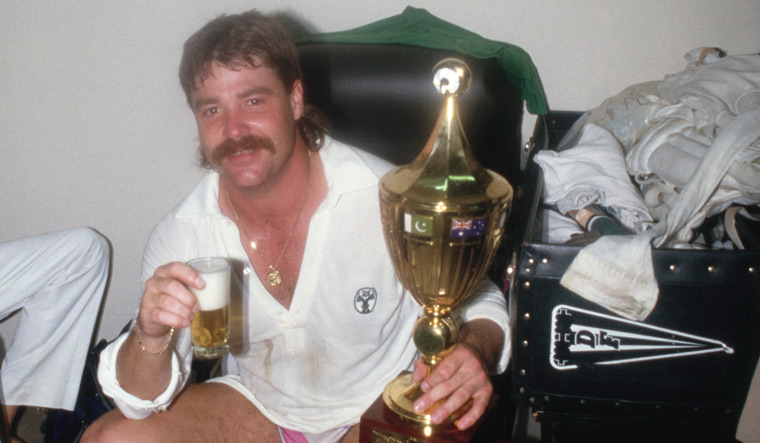 Getty Images
Getty Images
1987
There is still no consensus on how many beers Aussie batter David Boon downed on that flight to England from Australia in 1989. Some say it was 47 cans, while some others put the number at 52 and even 53. What they do agree on, though, is that Boonie loved a pint. Here, the man is seen with the World Cup trophy he won in India and, what else, a glass of beer.
 Getty Images
Getty Images
1983
Before the Australians, the mighty West Indies were looking for a hat-trick of World Cup victories. Having won the 1975 and 1979 editions, they looked set for a triple as they entered the 1983 final. Underdogs India had other plans. In a victory that would change the course of the sport in the country, Kapil’s Devils pulled off a famous upset at Lord’s.
The Indian spectators rushed the pitch to catch a closer glimpse of their heroes, taking with them a memory that would last a lifetime.
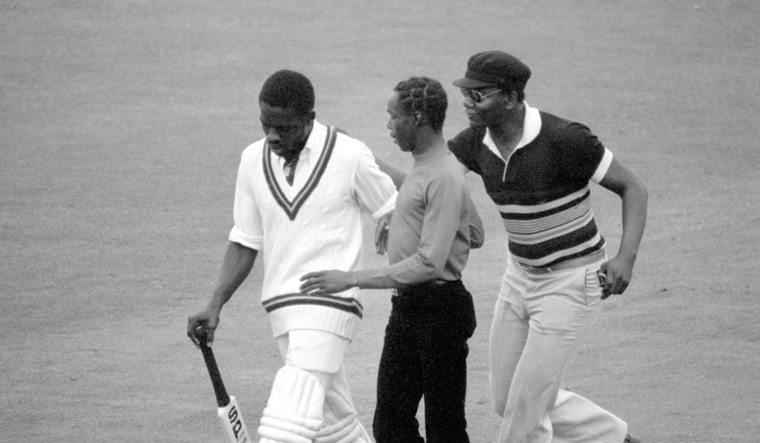 Getty Images
Getty Images
1979
It was the final against England at Lord’s and the great Viv Richards was expected to come to the party. Of course he did, with 138* off 157, but it was Collis King who outshone King Viv that day. He hit 86 off 66, with 10 fours and three sixes, and had fans rush to the middle to pat him on the back.
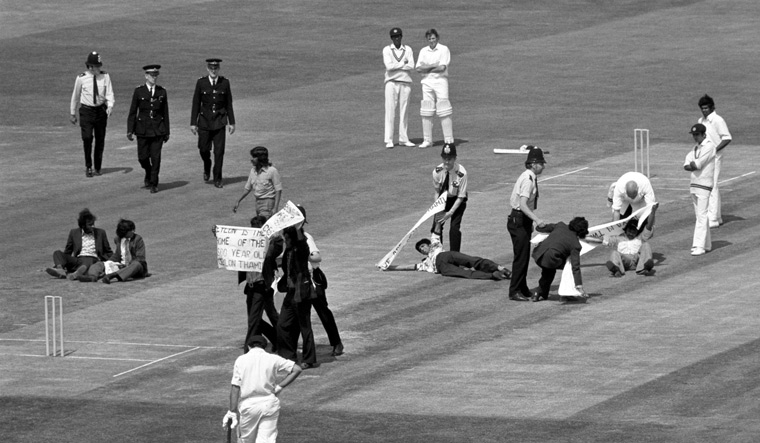 Getty Images
Getty Images
1975
“I believe it was perhaps the first instance of a cricket match being disrupted by political protesters,” Sri Lankan player Ranjit Fernando told Wisden Asia Cricket. The Tamil demonstrators, protesting political oppression with banners, laid down on the pitch to get attention. They were swiftly bundled off the ground and the match resumed. Australia beat Sri Lanka by 52 runs.


